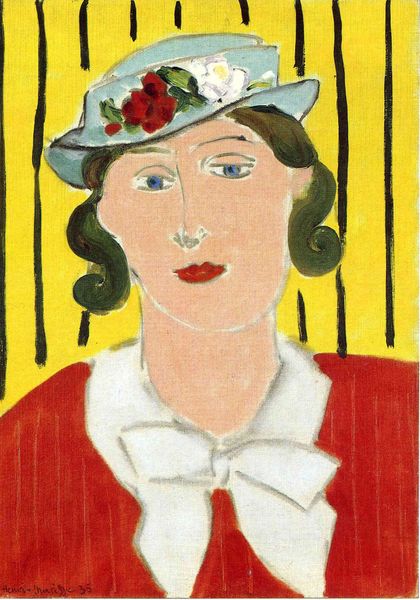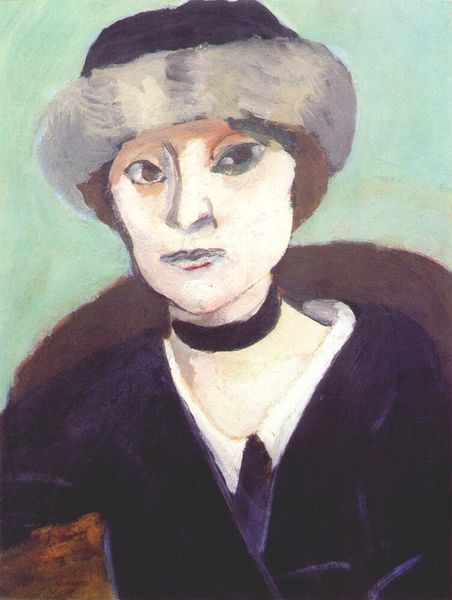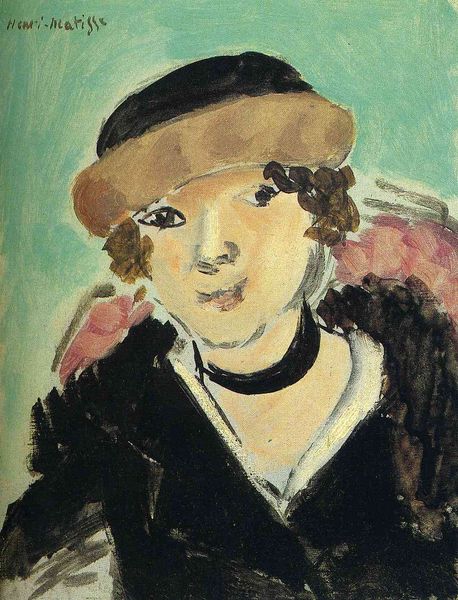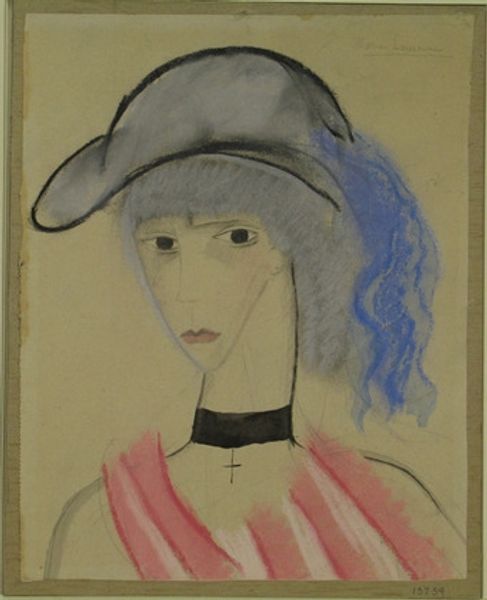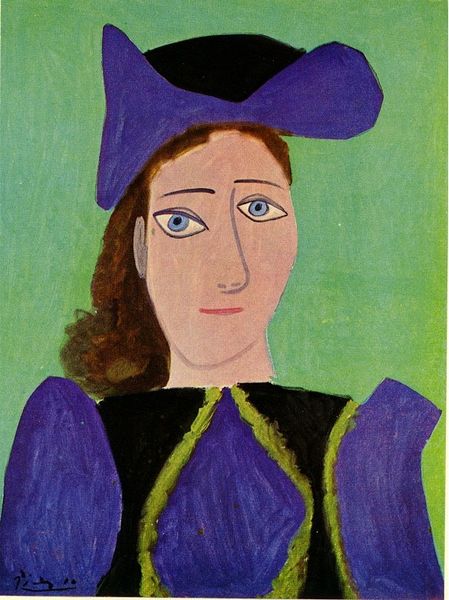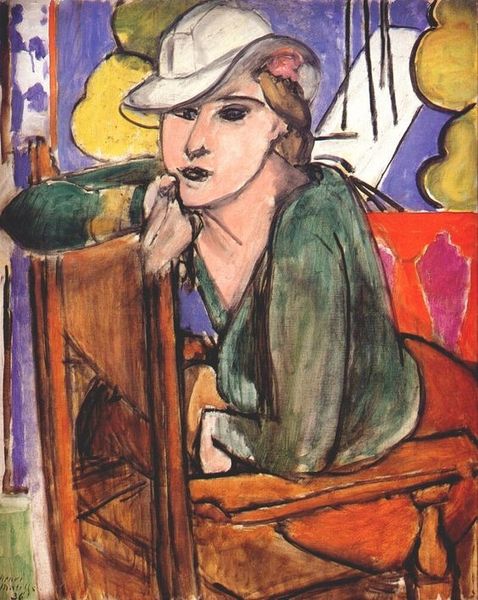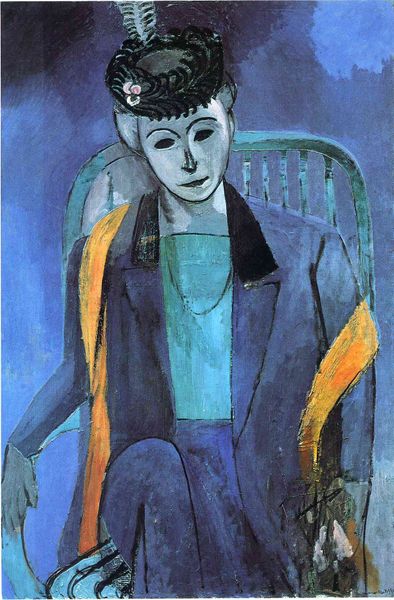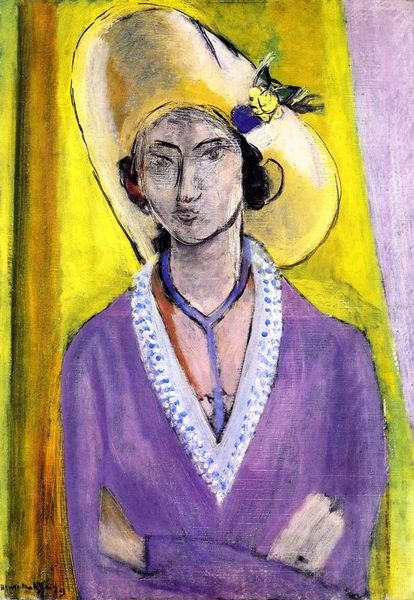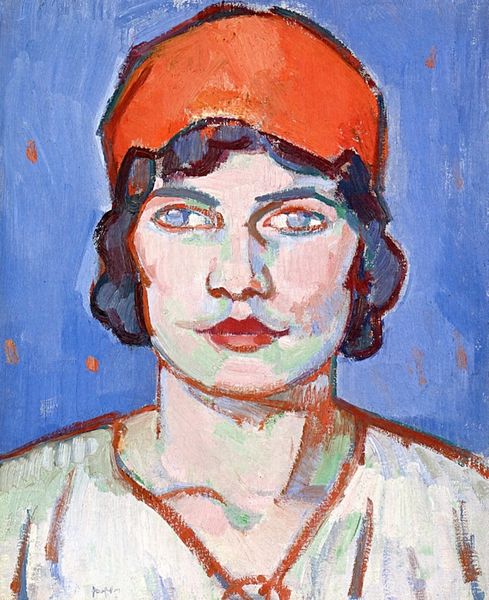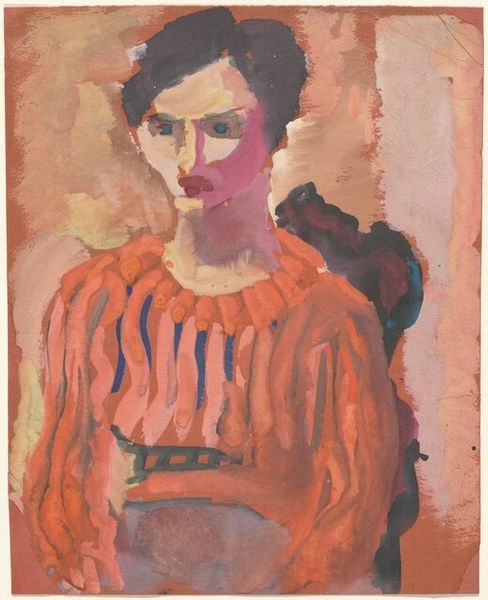
Copyright: Public domain US
Curator: This is Henri Matisse’s “Marguerite in a Leather Hat,” painted in 1914. It’s oil on canvas and a fascinating example of his Fauvist approach to portraiture. Editor: My initial reaction is the boldness of the color palette. The juxtaposition of blues, oranges, and that soft yellow is strikingly modern. The starkness of the planes on the sitter's face is compelling. Curator: It's interesting you say "stark." During this period, Matisse was deeply influenced by Cubism and the need to analyze form in new ways. However, let’s also think about 1914, as war was brewing and society was tense. Could this portrait reflect that through this emphasis on a flattened visual space? Editor: I absolutely see the possibility for societal unease reflecting onto this work. Thinking about the representation of women at this time – a move from traditional ideals toward greater visibility – I also wonder if the portrait challenges the conventional passive role of women through its assertive brushstrokes. Curator: Exactly! The Fauvist color choices, considered “wild” at the time, become an assertion of a modern female identity. This painting rejects conservative tastes and suggests the woman being represented refuses such limitations. The hat, while seemingly fashionable, almost becomes armor. Editor: I’m particularly drawn to her gaze. It’s so direct. This piece also reminds me how the art world has frequently treated and sidelined female artists. A portrait such as this by a male artist attains prestige far faster than portraits of a similar calibre painted by women of that time. It emphasizes those art historical dynamics, of how the market celebrates certain voices. Curator: It makes us ponder whose perspectives are memorialized. If Matisse’s rendering makes her timeless, there is a history of similarly strong women being painted *by* women but their work fading into obscurity or being misattributed. It reinforces the crucial need to interrogate canon formation constantly. Editor: Yes, this portrait serves as a reminder: while we can appreciate the aesthetics and context, we must question the narratives constructed around it and who benefits from that construction. It forces us to keep looking. Curator: It's important to look with criticality but with curiosity. We are invited to ponder, even question the very structures behind this artwork, not just the artwork itself.
Comments
No comments
Be the first to comment and join the conversation on the ultimate creative platform.

